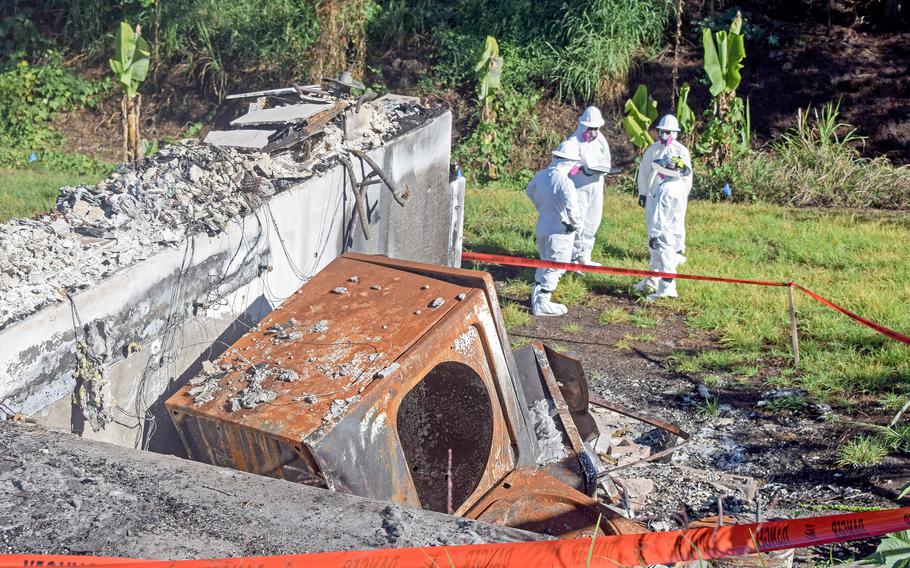
Workers begin a hazardous-site assessment on a property in Kula, Maui, Hawaii, under the oversight of the U.S. Army Corps of Engineers. (Richard Brown/U.S. Army Corps of Engineers)
FORT SHAFTER, Hawaii — The U.S. Army Corps of Engineers has begun its first hazardous-site assessments on two dozen properties among the more than 2,000 destroyed on Maui by wildfire in early August.
The Corps of Engineers commenced the site assessments on Saturday for 26 properties in Kula, which lies about 20 miles southeast of Lahaina, a town burned almost entirely to the ground by the inferno.
The death toll from the disaster stands at 99, with more bodies expected to be found as cleanup proceeds.
The Corps of Engineers serves as the Federal Emergency Management Agency’s lead entity in debris removal in the wake of disasters such as tornadoes, hurricanes and fires.
Contractors are entering each property to search for and remove household hazardous materials and “bulk asbestos-containing material,” Mark Cardwell, an emergency management specialist with the Corps of Engineers, told reporters during a conference call Monday.
“If you want examples of that, for household hazardous material, basically what’s under the kitchen sink,” he said. “And for your bulk asbestos material it’s maybe large floor tiles, ceiling tiles, something that is known to potentially contain asbestos.”
In conjunction with removing those items, contractors are developing for each property “a roadmap or a site diagram of how we’re going to remove debris from that property once we go into phase-two debris operations,” he said.
This initial assessment, which required permission from property owners, is all done by hand in lieu of using heavy equipment, Cardwell said.
Hawaiian cultural observers are monitoring all work.
Full debris removal will take roughly two to three days for each property, said Cardwell, who has experience with about 20 such disaster cleanups.
He declined to estimate how long it could take to clean the 26 properties.
“I do not want to state a specific timeframe because there’s extenuating circumstances, such as terrain of the property, maybe some certain kinds of debris on the property that’s going to require further remediation, or a hazard on the property before we can get on and do those,” he said.
They already know that that the charred remains of one electric vehicle is on one of the sites, which will require special handling, he said.
Dates for beginning cleanup for Lahaina are still under discussion, Cardwell said.